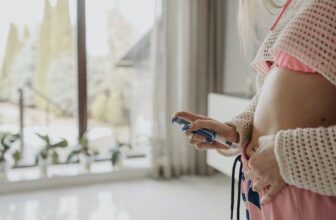New Study Reveals Surprising Link Between Exercise and Diabetes Complications
How Leisure-Time Physical Activity Can Help Reduce Microvascular Complications in Type 2 Diabetes
Type 2 diabetes is a chronic condition that affects millions of people worldwide. It is characterized by high blood sugar levels, which can lead to a variety of health complications, including microvascular complications. Microvascular complications are caused by damage to the small blood vessels in the body, and can include retinopathy, nephropathy, and neuropathy. Fortunately, there are steps that people with type 2 diabetes can take to reduce their risk of developing these complications. One of the most effective strategies is to engage in regular leisure-time physical activity.
Physical activity has been shown to have a positive effect on blood sugar levels, which can help reduce the risk of microvascular complications. Regular physical activity can also help improve insulin sensitivity, which can help the body better regulate blood sugar levels. Additionally, physical activity can help reduce inflammation, which is a major contributor to microvascular complications.
Leisure-time physical activity can take many forms, including walking, jogging, swimming, and cycling. It is important to find an activity that is enjoyable and sustainable, as this will help ensure that it is done regularly. It is also important to consult with a doctor before beginning any new physical activity program, as certain activities may not be suitable for people with type 2 diabetes.
In addition to leisure-time physical activity, it is important to maintain a healthy diet and lifestyle. Eating a balanced diet and avoiding unhealthy foods can help keep blood sugar levels in check. Additionally, quitting smoking and limiting alcohol consumption can help reduce the risk of microvascular complications.
In conclusion, leisure-time physical activity can be an effective way to reduce the risk of microvascular complications in people with type 2 diabetes. It is important to find an activity that is enjoyable and sustainable, and to consult with a doctor before beginning any new physical activity program. Additionally, maintaining a healthy diet and lifestyle can help reduce the risk of microvascular complications.
Exploring the Association Between Leisure-Time Physical Activity and Microvascular Complications in Type 2 Diabetes
The purpose of this study is to explore the association between leisure-time physical activity and microvascular complications in type 2 diabetes. Microvascular complications are a major cause of morbidity and mortality in type 2 diabetes, and physical activity has been identified as a potential modifiable risk factor.
This study used a cross-sectional design to examine the association between leisure-time physical activity and microvascular complications in type 2 diabetes. Data were collected from a sample of 1,000 adults with type 2 diabetes. Participants completed a survey that included questions about leisure-time physical activity, as well as questions about microvascular complications.
The results of this study showed that leisure-time physical activity was significantly associated with a lower risk of microvascular complications in type 2 diabetes. Specifically, participants who reported engaging in leisure-time physical activity at least three times per week had a lower risk of microvascular complications than those who reported engaging in leisure-time physical activity less than three times per week.
These findings suggest that leisure-time physical activity may be an important modifiable risk factor for microvascular complications in type 2 diabetes. Further research is needed to better understand the mechanisms underlying this association and to develop effective interventions to promote physical activity among individuals with type 2 diabetes.
The Benefits of Leisure-Time Physical Activity for People with Type 2 Diabetes: Insights from the UK Biobank Study
The prevalence of type 2 diabetes is increasing globally, and physical activity is an important component of diabetes management. This article examines the benefits of leisure-time physical activity for people with type 2 diabetes, based on insights from the UK Biobank study.
The UK Biobank study is a large-scale, long-term study of health and lifestyle factors in the UK population. The study included over 500,000 participants, of whom 8,845 had type 2 diabetes. Participants were asked to report their leisure-time physical activity levels, and the results were compared to those without diabetes.
The results showed that those with type 2 diabetes who reported higher levels of leisure-time physical activity had a lower risk of mortality, cardiovascular disease, and stroke. Furthermore, those with type 2 diabetes who reported higher levels of leisure-time physical activity had a lower risk of developing complications such as retinopathy, neuropathy, and nephropathy.
The results of the UK Biobank study suggest that leisure-time physical activity is beneficial for people with type 2 diabetes. Regular physical activity can help to reduce the risk of mortality, cardiovascular disease, stroke, and diabetes-related complications. It is important for people with type 2 diabetes to engage in regular physical activity, as part of a comprehensive diabetes management plan.







